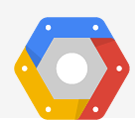Google Cloud Platform in our cloud-driven world.
We are still at the early stage when it comes to cloud industry. This means
inter alia that, a set of reluctances related to security and privacy remain persistent;
a bunch of headaches related to performance of the apps and of on-premise
development and deployment remain.
At Google, they are deeply committed to do better with open source
components and technologies. So that, with
Google Container Engine, you can easily
create and wire together container-based services and applications and
gain common capabilities like logging, monitoring and health management.
App Engine provisions network routing, load balancing, auto scaling,
monitoring and logging enabling you to focus on application code. Users can run
any language or library and customize or replace the entire runtime stack and you
have access to the broader array of machine types that Compute Engine offers.
Google Cloud Interconnect can offer better
network connectivity to support global architectures.
Google Cloud Debugger can make it easier to troubleshoot applications in production: simply pick a line of code, set a watchpoint and the debugger will return locals and a full stack trace from the next request that executes that line on any replica of your service.
Google Compute Engine Autoscaler gives developers the ability to dynamically resize a VM fleet in response to utilization and based on a wide array of signals, from QPS of a HTTP Load Balancer, to VM CPU utilization, or custom metrics from the Cloud Monitoring service.


